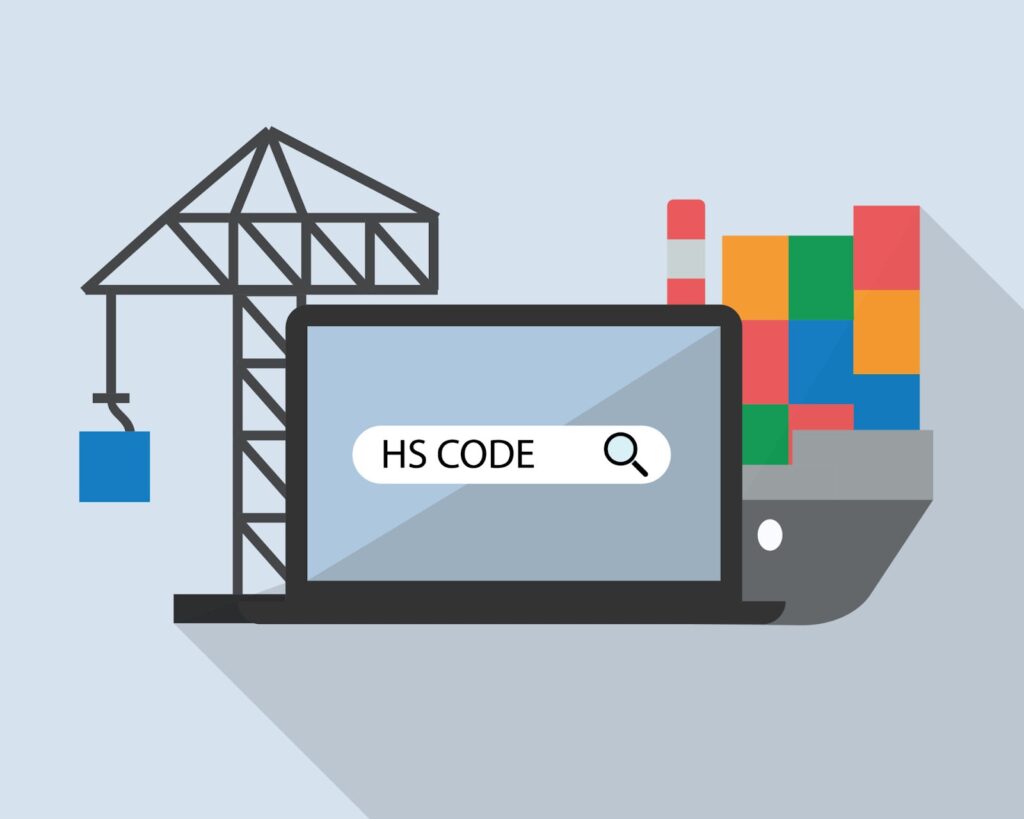A harmonized system code is used to classify goods imported and exported globally based on the Goods Classification System released by the World Customs Organization. This HS code system will help customs units classify goods in the best way while imposing product taxes which also become much more manageable. In this blog we will discuss the HS Code Essentials that are uniting the world of imports and exports.
What is the HS code?
HS Code, also known as the HS system, is a harmonized system of product descriptions and codes agreed upon by the WCO to classify more than 98% of traded goods worldwide. The product name is encoded into a series of numbers (usually eight or ten). All countries participating in import and export activities will use this code to describe goods, helping buyers and sellers agree on the product name, properties, effects, and product classification.
Besides, the HS code is also an essential basis for government agencies such as Customs, Taxation, and Chambers of Commerce to license the import and export of certain goods and determine taxes for the import and export of goods.
What does the HS Code structure include?
The structure of the HS Code includes the first six digits, called the International Harmonized System Code, and is applied uniformly globally. Next are the sub-codes, determined by each country to classify goods in more detail.
International commodity code (first six digits):
- Part 1 (first two digits): Chapter, general description of the type of goods.
- Part 2 (next two digits): Group (Heading), classification of goods within the chapter.
- Part 3 (next two digits): Subheading, more specific classification within the commodity group.
Secondary code (digits after the first six digits):
- Part 4 (last two digits) : Sub-subheading: countries can self-regulate more detailed classifications based on their needs and requirements.
Because the first 6-digit international commodity code is the same globally, we can use this code to classify goods and carry out international trade activities. Countries can then prescribe sub-codes to enhance granularity and compliance with domestic regulations and requirements.
Understanding this structure helps us easily classify goods and effectively use the HS Code system in import-export and international trade.
In what cases is HS code used?
In fact, every good imported or exported at international borders must be declared to customs using the HS Code. You can determine import and export taxes and some goods-related policies (risk management, product policies) from this code. In other words, when determining the HS Code, you can calculate the exact tax rate payable on your item along with related documents and procedures. You will not have to wonder when you look at your tax bill and not know where the taxes must come from. The tremendous significance of the harmonized system code is commonly used throughout the process of exporting goods.
Some concepts related to HS code that you should know
- Nomenclature: A system of names and terms used in scientific, technical or artistic fields
- Tariffs: Import and export tax obligations are set by the governments of host countries.
- Customs tariff schedule: The import and export tax list is set according to the individual laws of each country.
- Classification: Arranging goods into separate groups, creating favorable conditions for carrying out procedures and the process of importing and exporting goods. Goods after comparison will be reclassified in the group of goods most similar to them.
What are the functions and tasks of HS code?
The HS Code operates as more than a mere classification system. It stands as a powerful economic instrument in the hands of policymakers, enabling them to shape trade dynamics. This code doesn’t just categorize goods; it empowers policymakers to implement trade barriers or incentives strategically. By wielding the HS Code, policymakers can influence the flow of traded items, fostering or restraining trade based on specific economic goals. The main functions of the Customs HS code usually include:
- Budget revenue (import-export tax and special consumption tax)
- Protect economic interests (domestic industry)
- Social protection (health and safety)
- Economic development (trade facilitation)
- Security (across the entire commercial supply chain)
The Benefits Of Looking Up The Hs Code Correctly:
Looking up the correct HS code can bring many benefits, including:
- Check the HS code accurately to help minimize risks in import and export activities. If the HS code is incorrect, your goods may be detained or returned, causing a loss of time and money.
- Helps ensure compliance with legal regulations related to import and export activities. If the HS code is incorrect, you may violate legal regulations and be fined or sued.
- Check HS code accurately to help reduce costs related to import and export activities. If the HS code is incorrect, you may have to pay unnecessary fees or be fined.
- Helps increase efficiency in import and export activities. If the HS code is correct, you can easily find information about legal regulations and fees related to import and export activities.
When do you need HS codes for import and export shipments?
You will need HS codes to perform international import and export shipment operations such as:
- Complete shipping documents such as the sender’s instruction letter, commercial invoice, or certificate of origin
- Determination of customs duties
- Identify cases of customs duty reduction and exemption
- Meets the manufacturer/assembler’s tariff provisions
- Meet the conditions to join the Free Trade Agreement (FTA)
- Conduct market research and trade statistics
Summary
The harmonized system code is a global classification system for goods used in import-export activities. It simplifies customs procedures, taxation, and international trade by categorizing products universally. In e-commerce export programs like Amazon Global Selling, accurate use of HS codes streamlines transactions, ensures compliance with regulations, minimizes costs, and facilitates market expansion by effectively navigating tariffs and trade agreements.
